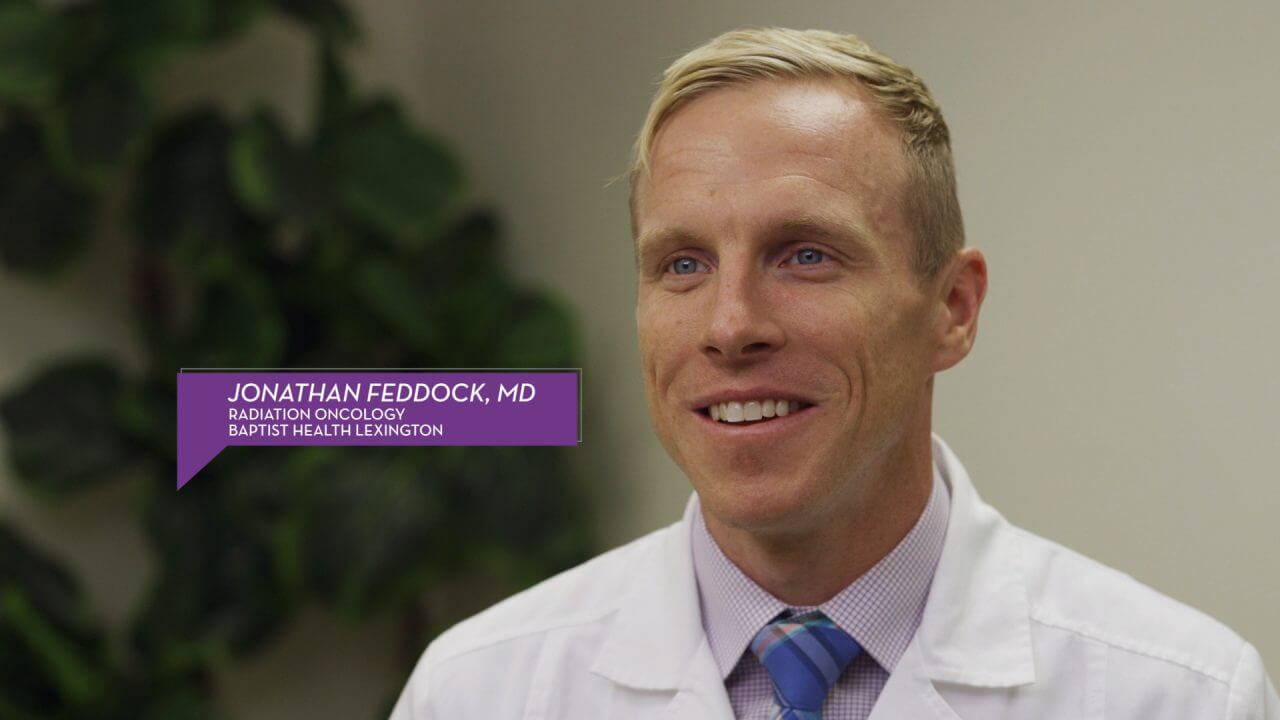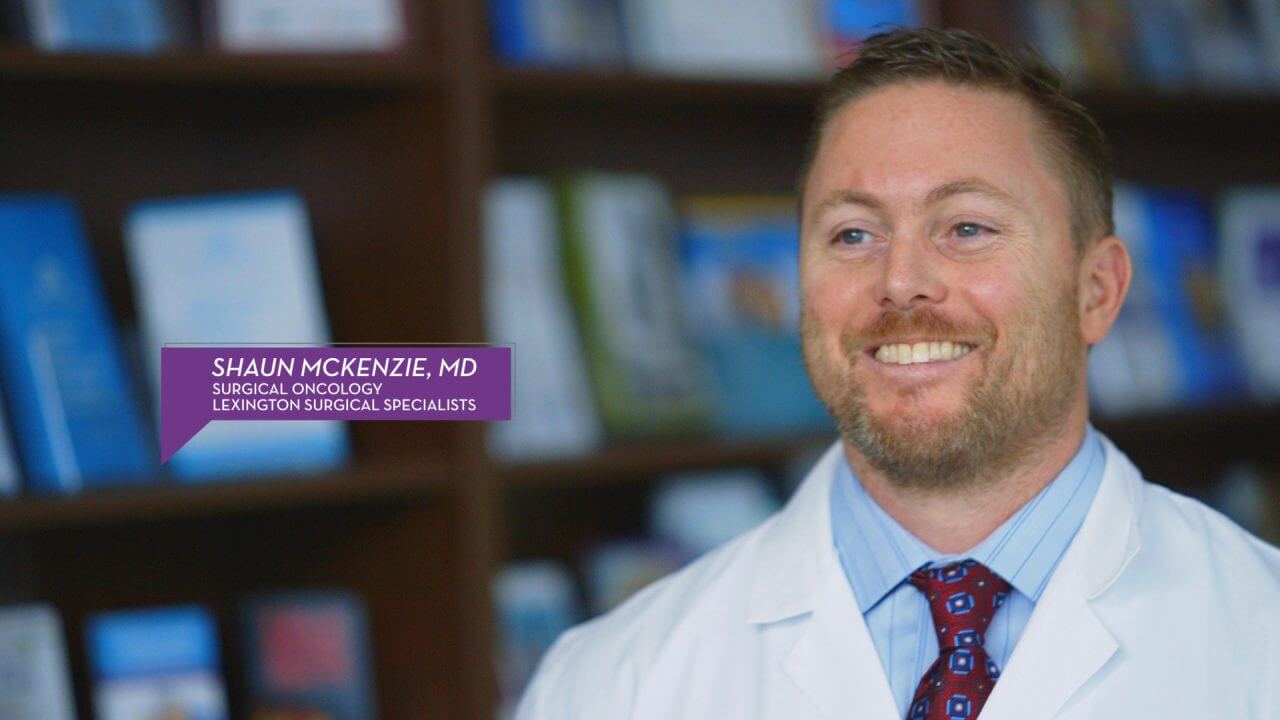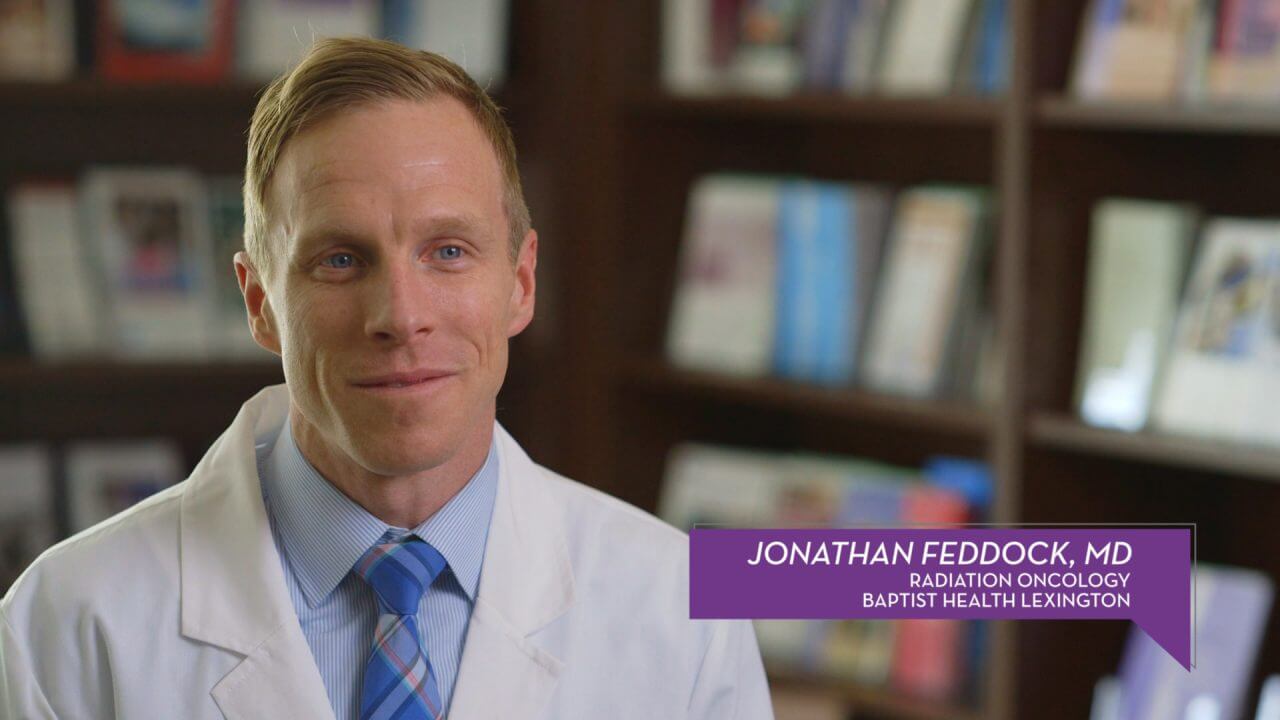Heart Care During Cancer Treatment
Baptist Health Lexington: Heart Care During Cancer Treatment
Baptist Health’s Cardio-Oncology program focuses on heart care during cancer treatment. Learn how our oncology cardiologists help to ensure a patient’s optimal care.
Heart Care During Cancer Treatment in Lexington, KY, HealthTalks Transcript
Nathan Kusterer, MD:
The goal of a cardio-oncology program is to make sure patients are receiving optimal cancer care without compromising their health in other areas. [We want] to make sure patients are strong enough to continue treatment and minimize potential side effects or adverse effects that can come from cancer treatments.
For a majority of patients, we’ll see them pretty soon after their cancer diagnosis. We’ll do a baseline, [or] what we call a risk assessment. We get an EKG and check their blood pressure in clinic. I’ll get some baseline lab work that looks at some markers of heart muscle strength, cholesterol, and go over their history. Periodically, throughout cancer treatment, we will do an echocardiogram, which is an ultrasound of the heart that’s looking at the pumping strength of the heart to make sure we’re not seeing any decline in strength or weakening.
Myself, and other cardiologists and oncologists, work closely and collaborate on what we think is going to be best for each patient. Prevention is oftentimes a big part of the cure. When you see patients from subsequent follow-up visits and they’re moving through their cancer treatment well, that makes me feel really good. On the other side, if we find that somebody has an issue and we can interrupt it early on, then that’s a great feeling too.
Next Steps and Useful Resources
Find a Provider
Echocardiograms vs. EKGs/ECGs
Healthy Blood Pressure by Age and Gender (Chart)



